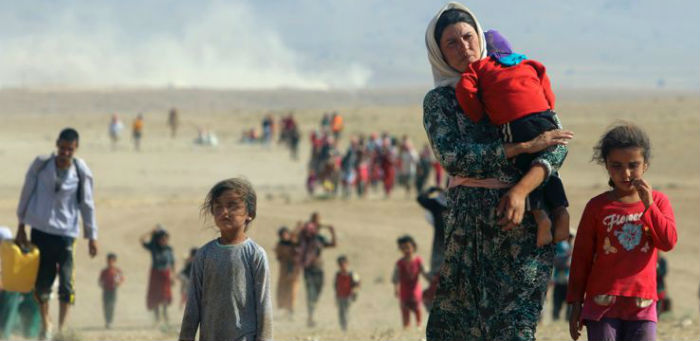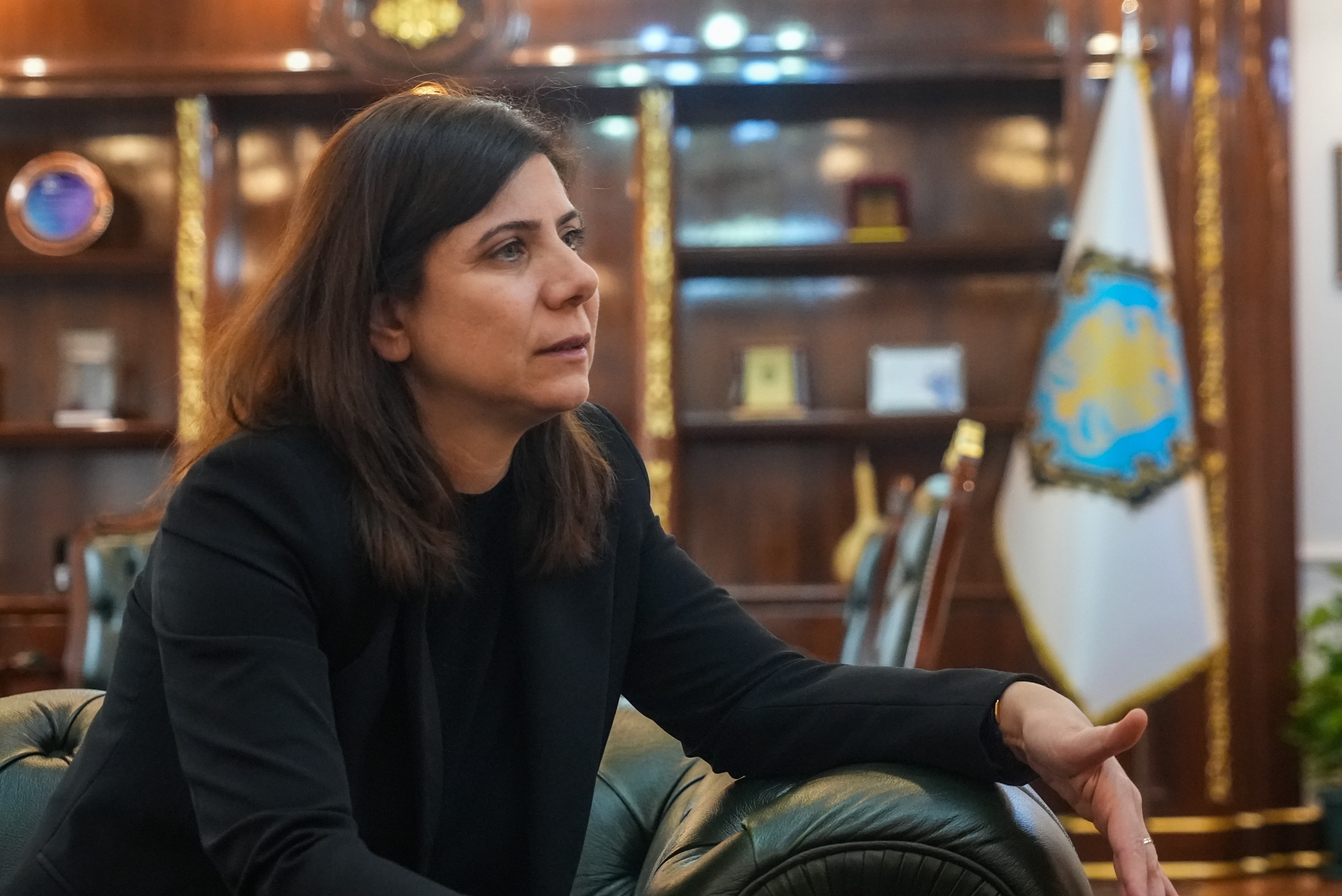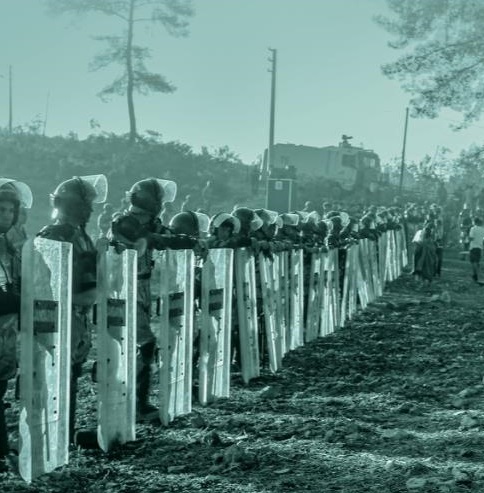In the second half of the 20th century, when the central conflict in the Middle East was around the Palestinian question, there were few analysts who said that the 21st century would see a greater conflict in the region, this time centered on the Kurdish question. They argued that just like the Palestinian people, who were stateless and lived under foreign occupation and therefore struggling for national independence, the Kurds had the same problem but four times as complex. The Kurdish people lived under four states – Turkey, Iran, Iraq and Syria – four states that were going through centralization process and therefore bringing huge pressure on the Kurdish traditional autonomy and its social fabric. Often, these states did not even recognize the existence of the Kurdish people – as in Turkey and Syria. In the age of nationalism, the Kurdish question was ignored by the states, and by the opposition parties alike. The Kurds were the major stateless people, and this anomaly could not continue, they argued.
Yet, history has its own ways of doing things, and the Kurdish question emerged much earlier than anyone expected. Two developments put the Kurdish question on the Middle Eastern map. The first was the 1980 military coup in Turkey, which practically destroyed the powerful Turkish leftist movements, leaving behind vacuum that had to be filled by a new force. As a result, a small Kurdish latecomer with the name “Kurdistan Workers’ Party” or PKK emerged as a major actor. PKK entered the field of armed struggle with a Stalinist-nationalist ideology quite late, as the party was founded in 1978 and it launched its armed campaign in 1984, which makes it one of the latest guerilla groups that uses a mixture of nationalist-Marxist ideology for its armed struggle. A decade later only Islamist groups would play a similar role. PKK was in alliance with the Baathist regime in Damascus, with bases in Syria and training camps in Lebanese Bekaa Valley. Yet, the salvation of PKK will come with its divergence of bases and networks – in the Kurdish communities in Europe and more important with establishing bases in the Kandil mountains on Iraqi-Turkish border hence outside Syrian control. When PKK was chased out of Syria in 1999, these two bases permitted PKK to survive, reorganize, and re-launch its armed struggle in 2004.
The other major event was the Iraqi invasion of Kuwait in 1990. The event turned Middle Eastern geopolitics upside down, and we are still living its aftershocks. Saddam Hussein’s misadventure, two years after the end of a disastrous war with Iran turning against his Gulf and American allies, led to the downfall of the Iraqi state in the next decade. It also led to the emergence of a new state on the map, which eventually became the Kurdistan Regional Government (KRG) in northern Iraq. This was happening as the Cold War was coming to an end, and a new geopolitical map was being drawn. It was a time when each and every player, superpower or a local militia group, was trying to find a new role. Now it is evident that for the US strategy in post-Cold War Middle East, the Kurds of Iraq but also elsewhere have a role to play.
Many underestimated the emerging Kurdish factor, namely Turkey. Instead of understanding the emergence of a new, powerful reality and working with it, Turkish political strategists desperately fought against it. Turkey opposed the emergence of KRG, only later to build close commercial collaboration with Erbil. Turkey continued to fight against its own Kurds, even after the Kemalists lost power to Erdogan. This conflict with the Kurds has put Ankara not only against the trend of history in the Middle East, but also against its own allies within NATO. Ankara opposed US invasion of Iraq in 2003, closing down its Incirlik base to US military operations. In 2012, Ankara opposed to Kurdish role in Syria, fearing the emergence of yet another Kurdish de facto state to its southern borders, and instead betting on radical Islamist militants. Both bets have clearly failed.
The visit of Turkish President to Washington in May this year made things clear concerning the role of the Kurds. Erdogan was hoping that Trump would correct the “mistakes” of the Obama administration, namely to distance itself from alliance with PKK-PYD in Syria. Two days before Erdogan’s visit to Washington, the US announced that it was going to arm Syrian Kurdish units of PYD with heavy weapons, including anti-tank guided missiles. The fact that Trump-Erdogan meeting lasted only 22 minutes including translation means that no meaningful discussion took place between the two leaders. Trump was to follow Obama’s policy of considering PYD its major ally inside Syria. In other words, the role of PYD in Syria is not a question of US administration and its policies, but it is a strategic choice; for US military planners not only the Iraqi Peshmerga counts in their fight against ISIS, but also PYD-PKK is to lead the attack on ISIS “capital” of Raqqa. For Washington, Paris or Berlin, the Kurdish role is evidently more important than the Incirlik airbase, and Turkish role as Western partner in the Middle East.
The emergence of Kurdish factor has a number of shortcomings. The first is the internal divisions within the Kurds, which reflects deep historic, social and geographic realities. In Iraq, the Barzani and Talabani leaderships reflect deeper divisions, geographic identities and tribal loyalties, which at times came into violent clashes as during 1994-97 inter-Kurdish wars. The divisions are equally important within Turkey. First, there are the “village guards” or Kurdish militias armed by the Turkish military to fight against the PKK. These village guards belong to Kurdish tribal chiefs, or aghas, who can trace their lineage back to Hamidiye Cavalry, who in the 19th century were armed by the Ottomans to play the role of auxiliary to the army. More important, today there is an important Kurdish middle class in major Turkish cities such as Istanbul, Ankara or Adana, who are not interested to see the emergence of an independent Kurdish state, but rather prefer to live in a democratic Turkey where rule of law and minority rights are respected. It will be the Turkish xenophobic push, rather than the Kurdish nationalist pull, that could make this group join the cause of the guerillas.
Second, Kurdish political groups built alliances full of contradictions. In the 1980’s and 90’s, PKK received support from Syrian authorities to fight Turkish military, while thousands of Syrian Kurds did not even have nationality, and did not enjoy basic cultural rights. How will a reinforced regime in Damascus treat the Kurdish autonomy “Rojava” in the north? Similarly, in Iraq Kurdish Democratic Party (KDP) is in alliance with Ankara, while Patriotic Union of Kurdistan (PUK) is close to Baghdad-Tehran. Kurdish nationalism, much like Arab nationalism, is pluralist in nature, and rejecting this fact would be ignoring reality.
Lastly, Kurdish nationalism is a latecomer, when the entire regional politics is in post-nationalist epoch where sectarian identities have become important. Kurds are largely Sunni Muslims, but also Alevi, Shiite and other religious groups. Kurds have also been impacted by Islamic radicalism and sectarianism, for example the Kurdish Mullah Krekar was the one who introduced Abu Mus’ib al-Zarqawi to northern Iraq in 2003, and many ISIS members are Kurds from Iraq, Turkey or Syria. Religious differences were also clear in the case of Yazidis of Sinjar. When ISIS attacked Yazidis in August 2014, their areas were under the protection of Peshmerga forces. But Peshmerga did not fight, and evacuated its forces, leaving the Yazidi civilians to the jihadi fighters. Evidently, the Kurdish leaders did not see the Yazidis as part of “their group” and did not feel obliged to defend them. This has created a deep divide between the Yazidi population of Sinjar area, and the KRG authorities. More generally, it is yet to be seen how the growing Sunni-Shiite polarization could affect the emerging, yet fragile, Kurdish identity and mass consciousness.





